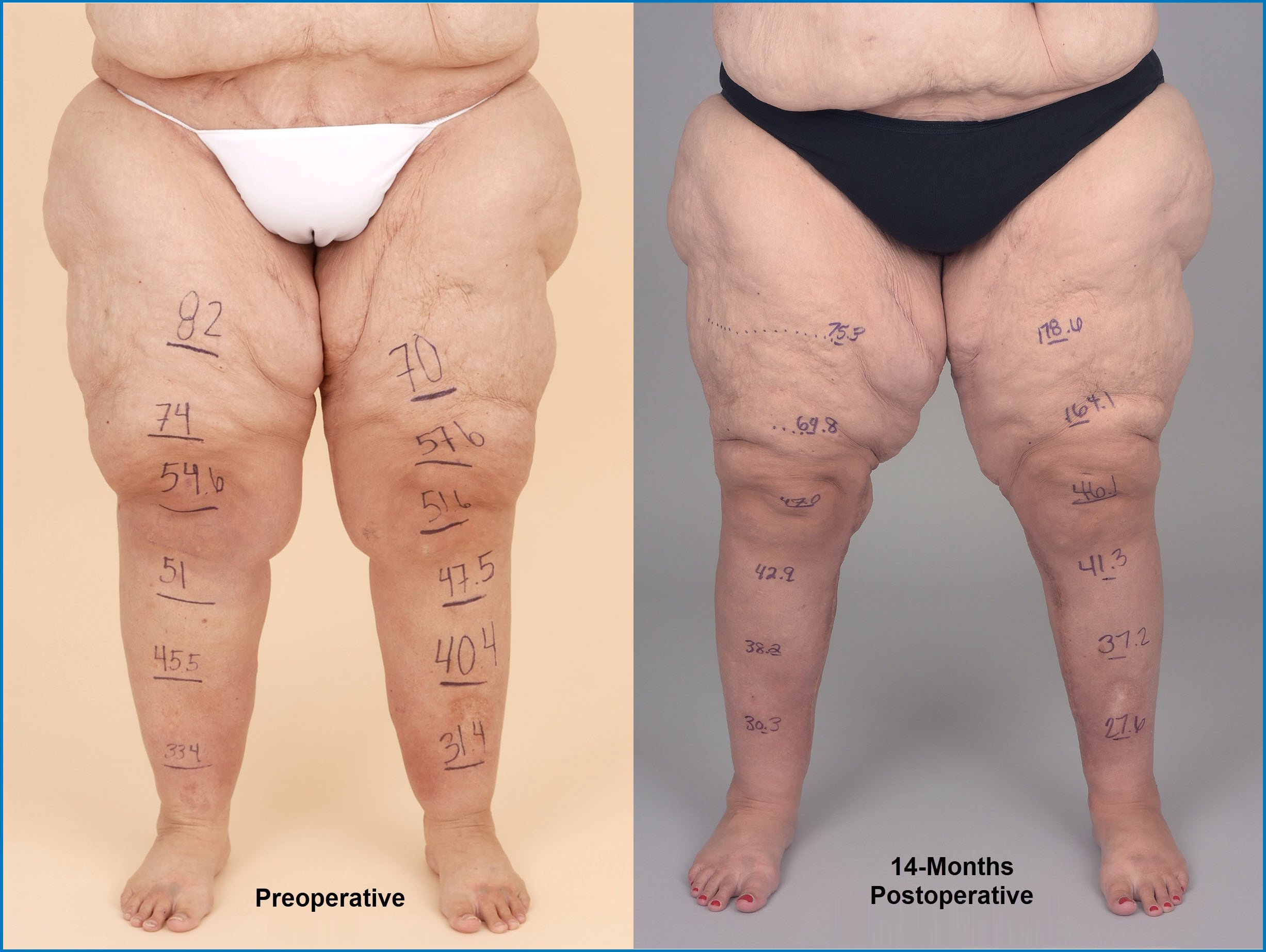Dermatology & Plastic Surgery Institute Outcomes
Lymphedema
Outcomes of Lymphaticovenular Anastomosis in Primary and Secondary Lymphedema
Supermicrosurgical lymphaticovenular anastomosis (LVA) is an established treatment for fluid-predominant extremity secondary lymphedema. All patients (60 women and 18 men) who underwent LVA for both primary and secondary fluid-predominant lymphedema at Cleveland Clinic from February 2020 - June 2022 were retrospectively studied after Institutional Review Board approval.
Patients' mean age was 51.7 ± 15.7 years, mean BMI was 25.7 ±4.8, and swelling was present for 7.3±10.2 years. Twenty-six patients had primary and 52 patients had secondary lymphedema. The lower extremity was affected in 48 patients, the upper extremity in 25, feet in 2, and abdomen in 3 patients. The average number of LVAs performed were 10±4 in the upper extremity, 7±2 in the lower extremity, 4±3 in the abdomen and 3±1 in the foot. All patients were discharged on the same day as their surgery. The mean follow-up period was 12.6 months (range 3 – 24 months). All patients reported a notable reduction of symptoms including but not limited to tightness, numbness, decreased range of motion, decreased function, and pain. Limb girth measurements were at mismatched levels in many patients, and thus were omitted from the final analysis. All patients demonstrated improved lymph drainage on ICG lymphography with shrinkage of pathologic and emergence of healthier lymphographic patterns, which continued to improve throughout the study period. LVA is effective and safe in both primary fluid-predominant lymphedema and secondary fluid-predominant lymphedema.
Outcomes of Lymphaticovenular Anastomosis in Primary and Secondary Lymphedema
Before Treatment

